Integrating Renewables Into Electrical Grids: Science & Innovation
Category: Renewable Energy
Understanding How Renewables Transform Electrical Grids
Whether you're a curious beginner fascinated by clean energy or an electrical engineer navigating the complexities of modern grids, integrating renewables like wind and solar into electrical networks is both exciting and challenging. You’ve likely searched for clear, in-depth insights into how these fluctuating energy sources mesh with existing grid infrastructure, the science behind balancing supply and demand, and the innovative technologies that are making it possible. This article advances beyond basic overviews, providing a comprehensive exploration tailored to your knowledge level. You'll discover cutting-edge solutions such as smart grids, energy storage systems, and grid stability mechanisms — all crucial to accommodating growing renewable shares while ensuring reliability. Unlike other resources that either oversimplify or get lost in jargon, this post offers a precise, structured view into the integration process, empowering you with the understanding needed to grasp how renewables shape the future of energy. Continue reading to unlock a detailed roadmap of the innovations and scientific principles enabling renewables to power our grids sustainably and efficiently.
- Understanding How Renewables Transform Electrical Grids
- Overview of Electrical Grid Basics and Traditional Energy Integration
- Challenges in Integrating Renewable Energy
- Role of Grid Modernization and Smart Grids
- Energy Storage Solutions and Their Impact
- Advanced Forecasting and Demand Response Techniques
- Hybrid Energy Systems and Microgrids: Enhancing Resilience and Renewable Integration
- Innovations in Grid Frequency and Voltage Control
- Infrastructure Upgrades and Transmission Solutions
- Regulatory and Market Mechanisms Supporting Integration
- Future Trends and Emerging Technologies in Renewable Grid Integration
Overview of Electrical Grid Basics and Traditional Energy Integration
To fully appreciate the transformative impact of renewables on our power systems, it’s essential to understand the core components and traditional operation of electrical grids. At their foundation, electrical grids consist of three main parts:
- Generation – power plants producing electricity, historically dominated by centralized fossil fuel sources such as coal, natural gas, and oil.
- Transmission – high-voltage lines that transport electricity over long distances from generation sites to demand centers.
- Distribution – lower-voltage networks delivering electricity to homes, businesses, and industries.
Traditional grids rely heavily on centralized fossil fuel generation, where stable, controllable power plants operate continuously or on-demand to match electricity consumption. This model hinges on the predictability and dispatchability of thermal power plants, allowing grid operators to maintain a delicate balance between supply and demand—a necessity since electricity must be consumed the instant it’s produced.
However, integrating variable renewable energy sources like wind and solar introduces new challenges to this well-established architecture:
- Intermittency and Unpredictability: Unlike fossil plants, renewable generation depends on weather conditions, causing fluctuations that are not easily scheduled.
- Reduced Grid Inertia: Conventional power plants contribute physical inertia to the system, stabilizing frequency; renewables connected via inverters do not inherently provide this support.
- Bidirectional Power Flows: Distributed solar installations can feed electricity back to the grid, complicating traditional one-way flow assumptions.
- Infrastructure and Control Limitations: Existing transmission and distribution systems were not originally designed for high shares of variable inputs, requiring upgrades and advanced control strategies.
These limitations highlight why simply "plugging in" renewables is insufficient. Instead, modernizing grid infrastructure and adopting advanced technologies are vital to ensure reliable, efficient integration of clean energy without compromising stability. Understanding these foundational concepts sets the stage for exploring innovative solutions like smart grids, energy storage, and advanced forecasting techniques that address renewable integration challenges directly.
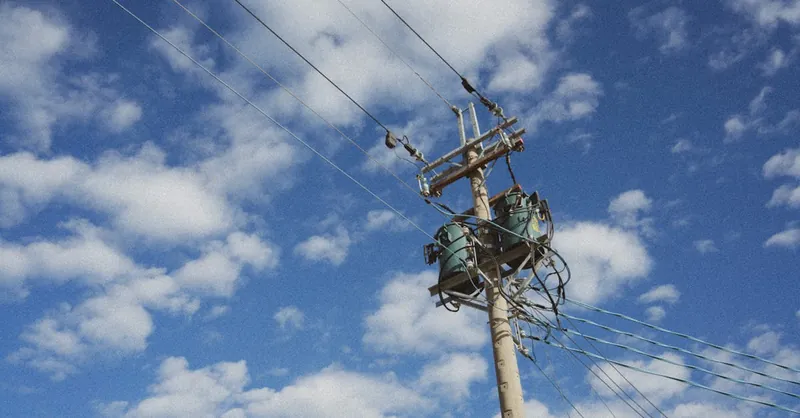
Image courtesy of Matthias Schleiden
Challenges in Integrating Renewable Energy
Incorporating renewable energy sources such as wind, solar, and emerging technologies into existing electrical grids presents multiple technical and operational challenges. Unlike traditional power plants that provide consistent and controllable power output, renewable generation is inherently intermittent and variable, largely dependent on weather patterns and time of day. This unpredictability impacts grid operators’ ability to maintain the critical balance between electricity supply and demand, which is essential for grid stability and reliable power delivery.
Key Integration Challenges
-
Intermittency and Variability
Wind speeds fluctuate and solar irradiance varies with cloud cover, seasonal cycles, and diurnal changes. This causes frequent and sometimes rapid changes in electricity output, challenging grid operators to forecast generation accurately and adjust other resources in real time to maintain equilibrium. -
Grid Stability and Frequency Regulation
Conventional synchronous generators inherently provide rotational inertia, which stabilizes the grid’s frequency by resisting sudden changes in power supply or demand. Most renewables, especially those connected through power electronics like inverters, lack this inherent inertia. As a result, grids with high renewable penetration require advanced frequency regulation techniques to prevent voltage fluctuations, frequency instability, and potential blackouts. -
Transmission Constraints
Renewable generation sites are often located far from consumption centers—for example, offshore wind farms or large solar fields in deserts. This geographic mismatch introduces transmission bottlenecks, as existing high-voltage lines may lack sufficient capacity or require costly expansion to accommodate new power flows. Moreover, the variability in renewable output demands more flexible transmission management and dynamic grid operation. -
Bidirectional Power Flows and Distribution Network Impact
With the rise of distributed solar PV systems, electricity flow across distribution networks shifts from a unidirectional model to a two-way system. This complicates voltage regulation, protection schemes, and requires advanced grid monitoring and control solutions to avoid equipment overloads and ensure safe integration.
Effectively addressing these challenges calls for a combination of improved forecasting methods, grid modernization, enhanced energy storage solutions, and flexible grid management strategies. Understanding these hurdles is crucial for both beginners and experts aiming to explore or innovate in the field of renewable energy integration.

Image courtesy of Kindel Media
Role of Grid Modernization and Smart Grids
As renewable energy sources continue to play a larger role in power generation, the traditional grid infrastructure requires significant modernization to handle their unique characteristics. Grid modernization leverages digital technologies, automation, and advanced communication networks to enhance the grid’s flexibility, responsiveness, and resilience—key attributes for integrating variable renewables effectively.
How Digitalization Enhances Renewable Integration
Digitalization introduces real-time monitoring and data analytics capabilities to electrical grids. This means grid operators can track electricity flows, voltage levels, and frequency variations instantaneously across the entire system. Equipped with this granular visibility, operators can:
- Detect and respond rapidly to fluctuations in renewable generation.
- Optimize dispatch of flexible resources such as energy storage and demand response.
- Improve forecasting accuracy using machines learning models fed by real-time sensor data.
By continuously analyzing operational data, digitalized grids reduce the risk of instability and enable smoother integration of renewables without compromising reliability.
The Power of Advanced Metering and Automation
Advanced Metering Infrastructure (AMI), commonly known as smart meters, transforms how electricity consumption and generation data are collected and utilized. Unlike traditional meters, smart meters provide detailed, time-stamped usage information both to utilities and consumers, facilitating dynamic pricing models, demand-side management, and better alignment of consumption with renewable output cycles.
Automation technologies embedded in smart grids automatically control switches, transformers, and other critical components to adapt grid configuration on the fly. This automated control supports:
- Dynamic voltage regulation to accommodate bidirectional power flows from rooftop solar.
- Fault detection and self-healing capabilities to minimize outages when disturbances occur.
- Seamless integration of distributed energy resources (DERs) by adjusting protection settings and operational parameters in real time.
Together, these enhancements empower the grid to be more flexible, resilient, and responsive, ultimately enabling higher penetration of wind, solar, and emerging renewable technologies.
In summary, grid modernization and smart grids are cornerstone innovations that transform legacy power networks into intelligent energy systems capable of balancing the variability and decentralization inherent in renewable energy. Their role is critical to achieving a sustainable, reliable, and economically efficient energy future.
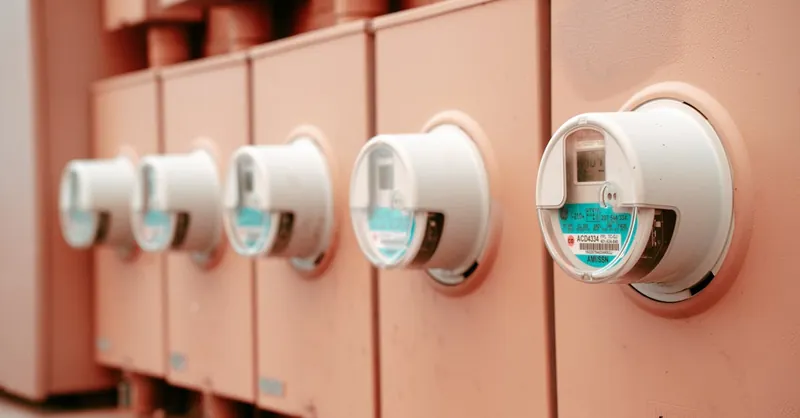
Image courtesy of Connor McManus
Energy Storage Solutions and Their Impact
A pivotal challenge in integrating wind, solar, and other renewable energies into power grids is managing their inherent variability and intermittency. This is where energy storage solutions become indispensable. By capturing excess renewable energy during periods of high generation and releasing it when production dips or demand surges, storage technologies smooth out fluctuations, enhance grid stability, and increase the overall reliability and resilience of the electrical system.
Key Energy Storage Technologies Supporting Renewable Integration
- Battery Energy Storage Systems (BESS)
Batteries, particularly lithium-ion types, have emerged as the most versatile and rapidly deployable storage option. They provide fast response times and can be scaled from small residential setups to large grid-scale installations. Batteries help in: - Balancing short-term variability by storing surplus solar or wind power.
- Providing ancillary services such as frequency regulation and voltage support.
-
Enabling peak shaving and load leveling, reducing strain on the grid during high demand periods.
-
Pumped Hydro Storage
The oldest and largest form of grid-scale storage, pumped hydro involves moving water between reservoirs at different elevations. During excess renewable generation, water is pumped uphill, storing potential energy. When needed, water flows back down through turbines to generate electricity. Benefits include: - High capacity and long discharge duration suitable for multi-hour or daily storage.
- Proven, reliable technology with high round-trip efficiency.
-
Support for grid inertia and frequency regulation in some configurations.
-
Compressed Air Energy Storage (CAES)
This technology uses surplus electricity to compress air into underground caverns or tanks. Later, the compressed air expands through turbines to generate electricity on demand. CAES offers: - Large-scale, long-duration storage capacity.
- Potential integration with renewable hydrogen production in advanced systems.
-
Opportunities for geographic flexibility where suitable geological formations exist.
-
Emerging and Hybrid Storage Technologies
Other innovative solutions like flow batteries, thermal energy storage, and flywheels are gaining attention for specific applications. Hybrid systems combining multiple storage types or integrating storage with renewables and demand response enhance grid flexibility even further.
How Energy Storage Mitigates Renewable Variability and Supports Grid Reliability
Energy storage systems act as a buffer, offsetting the unpredictable nature of wind and solar power by:
- Shifting energy in time, storing surplus generation when renewable output exceeds demand and discharging during deficits.
- Improving frequency and voltage regulation, countering the lack of inertia from inverter-connected renewables.
- Reducing curtailment of renewable energy by absorbing excess electricity that would otherwise be wasted.
- Enabling greater penetration of renewables by providing dispatchable power to meet peak loads and maintain grid reserves.
In essence, energy storage transforms variable renewable resources into reliable, dispatchable assets, crucial for advancing a sustainable and resilient energy future. Grid planners and engineers increasingly prioritize incorporating diverse storage portfolios to optimize renewable integration, reduce dependence on fossil fuel backups, and support the evolving dynamics of modern electrical grids.

Image courtesy of Kindel Media
Advanced Forecasting and Demand Response Techniques
Accurate prediction of renewable energy generation and flexible management of electricity demand are pivotal to optimizing renewable integration into electrical grids. Improved weather forecasting, empowered by high-resolution meteorological data and sophisticated models, provides grid operators with precise, short- and medium-term forecasts of wind speeds, solar irradiance, and other critical variables. This enhanced visibility reduces uncertainty around renewable output, enabling better scheduling of dispatchable resources and minimizing reliance on costly reserves.
Beyond traditional forecasting, AI-driven predictive analytics leverage machine learning algorithms that continuously learn from historical generation patterns, weather trends, and grid behavior to deliver highly nuanced predictions. These AI models integrate vast datasets—from satellite imagery to sensor readings—improving forecast accuracy and allowing more proactive grid management. This predictive capability is essential for maintaining grid stability and efficiently balancing supply with fluctuating renewable inputs.
Complementing forecasting advances are dynamic demand response (DR) techniques, which actively adjust electricity consumption in response to real-time grid conditions. By incentivizing end-users—residential, commercial, or industrial—to reduce or shift their power use during renewable deficits or peak demand periods, DR smooths load profiles and alleviates stress on the grid. Smart meters and IoT devices facilitate automatic demand adjustments, while time-of-use pricing and direct load control programs encourage consumer participation. This flexible demand-side management effectively acts as a virtual battery, helping to absorb variability and enhance grid resilience.
Together, advanced forecasting and demand response form a powerful synergy that optimizes renewable integration. Accurate predictions inform when and where demand response should be activated, while dynamic load management reduces the need for expensive backup generation and grid reinforcements. For electrical engineers and energy professionals, mastering these cutting-edge techniques is crucial to designing adaptable, efficient, and sustainable renewable-powered grids.
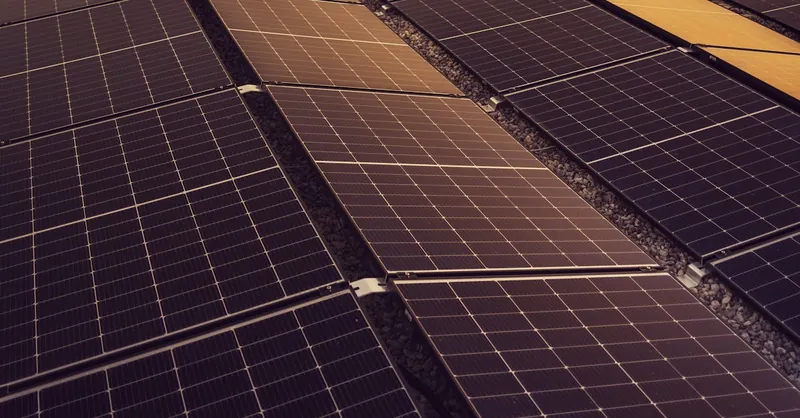
Image courtesy of Michael Pointner
Hybrid Energy Systems and Microgrids: Enhancing Resilience and Renewable Integration
As renewable energy penetration grows, hybrid energy systems and microgrids are emerging as powerful solutions to overcome variability and enhance grid reliability. Hybrid systems combine multiple power generation sources—typically renewable resources like wind and solar—with traditional or complementary technologies such as diesel generators, natural gas turbines, or energy storage units. This combination leverages the strengths of each technology to provide a more consistent, dispatchable power supply, reducing dependence on fossil fuels while ensuring stable electricity availability.
Benefits and Applications of Hybrid Energy Systems
-
Improved Reliability and Stability
By integrating diverse generation sources, hybrid systems balance the intermittency of renewables with the controllability of conventional power or storage, offering a reliable energy mix that can respond dynamically to demand fluctuations and weather changes. -
Optimized Use of Renewable Resources
Hybrid configurations optimize renewable utilization by shifting loads and generation, minimizing renewable energy curtailment and reducing fuel consumption in backup systems. -
Cost Efficiency and Emission Reduction
Combining renewables with efficient conventional assets or storage lowers operational costs and carbon footprints, making hybrid setups economically and environmentally attractive, especially in remote or islanded grids.
Alongside hybrid energy setups, microgrids—localized groups of interconnected loads and distributed energy resources (DERs)—play a transformative role in renewable energy deployment. Microgrids can operate connected to the main grid or independently (island mode), offering enhanced grid resilience, flexibility, and control.
Key Advantages of Decentralized Microgrids
- Enhanced Resilience and Reliability: Microgrids enable critical facilities and communities to maintain power during main grid outages by switching to local generation, reducing vulnerability to widespread blackouts.
- Facilitated Renewable Integration: By managing generation and load locally, microgrids can efficiently incorporate high shares of renewables, avoiding transmission constraints and reducing grid stress.
- Grid Services and Demand Management: Microgrids provide ancillary services such as frequency regulation and voltage support to the main grid, while empowering consumers with greater control over their energy usage and generation.
Together, hybrid energy systems and microgrids represent an innovative, decentralized approach to modern power generation. They enhance the ability of electrical grids to integrate renewables sustainably, improve system reliability, and provide tailored energy solutions to diverse geographic and socio-economic settings. For electrical engineers and energy professionals, understanding design principles and operational strategies of these systems is essential for advancing resilient, renewable-centric grids worldwide.

Image courtesy of Aleksey Kuprikov
Innovations in Grid Frequency and Voltage Control
Integrating high shares of renewable energy fundamentally alters the dynamic behavior of electrical grids, making traditional frequency and voltage control methods less effective. To maintain power quality and system stability under these new conditions, several cutting-edge technologies have been developed and deployed. These innovations compensate for the reduced mechanical inertia and enable precise grid management tailored for renewable-heavy power systems.
Advanced Inverter Controls: Power Electronics as Grid Stabilizers
At the heart of renewable integration are power electronic devices called inverters, which convert DC output from solar panels or variable-frequency AC from wind turbines into grid-compatible electricity. Modern inverters go far beyond simple energy conversion — they are equipped with sophisticated control algorithms that allow them to actively regulate voltage and frequency.
Key functionalities include:
- Grid-Forming Controls: Unlike traditional inverters that only inject power, grid-forming inverters mimic the behavior of synchronous generators, actively setting voltage amplitude and frequency references. This capability is crucial for maintaining grid stability especially in microgrids or low-inertia systems.
- Voltage Ride-Through: Advanced inverters maintain operation during voltage sags and swells, helping to support the grid during disturbances rather than disconnecting.
- Reactive Power Support: Inverters dynamically adjust reactive power injection or absorption, facilitating local voltage regulation without relying solely on mechanical devices.
Synthetic Inertia: Emulating Mechanical Inertia with Electronics
Conventional thermal generators inherently provide rotational inertia via their spinning masses, which naturally resist frequency deviations. Renewable technologies connected through inverters lack this physical inertia, posing risks of faster frequency excursions. To address this, the concept of synthetic inertia or virtual inertia has been developed.
Synthetic inertia algorithms enable inverter-based resources to:
- Detect frequency changes quickly via high-speed measurements.
- Inject or absorb power transiently to counteract frequency deviations.
- Provide inertia-like response that stabilizes the grid frequency in the critical first seconds after disturbances.
By emulating the inertial response, synthetic inertia helps reducethe risk of grid instability and supports a smooth transition to low-carbon energy systems with minimal reliance on fossil-fueled synchronous machines.
Smart Transformers: Dynamic Voltage Control and Grid Flexibility
The evolution of the traditional transformer into a smart transformer incorporates power electronics, sensors, and communication interfaces to offer unprecedented control over voltage and power flows within the distribution network.
Smart transformers provide:
- Dynamic voltage regulation adapting to rapid injection and withdrawal of distributed renewable energy.
- Bidirectional power flow management, critical for grids with high penetration of rooftop solar and electric vehicles.
- Fault detection, isolation, and self-healing capabilities that improve network resilience and reliability.
- Integration with grid control systems for coordinated voltage and reactive power support.
In renewable-intensive grids, smart transformers act as intelligent nodes, enabling flexible grid topology reconfiguration and seamless interaction between distributed energy resources and the central grid.
Together, these innovations in grid frequency and voltage control technologies—advanced inverter controls, synthetic inertia provision, and smart transformers—constitute essential pillars of modern power system operation. They empower utilities and grid operators to uphold stringent power quality standards and ensure system reliability, despite the inherent variability and decentralized nature of renewable energy sources. Electrical engineers working at the forefront of renewable integration must master these technologies to design resilient, stable, and future-ready grids.
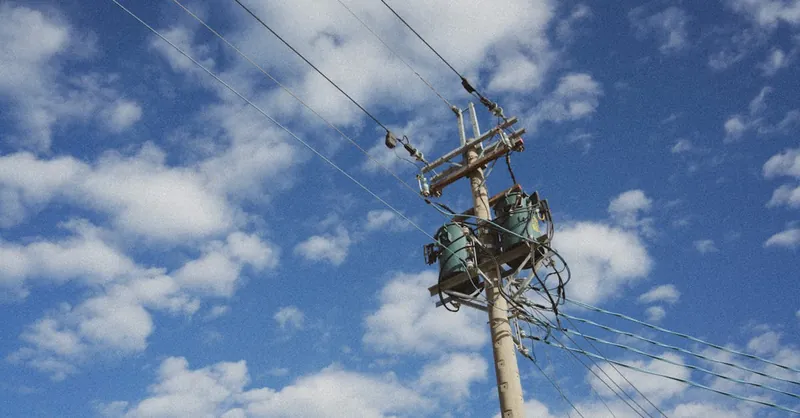
Image courtesy of Matthias Schleiden
Infrastructure Upgrades and Transmission Solutions
A critical enabler for large-scale renewable energy integration is the modernization and expansion of grid infrastructure, particularly in the transmission domain. Renewable resources such as offshore wind farms or expansive solar parks are often situated far from major load centers, demanding robust and flexible transmission networks capable of efficiently transporting clean energy over long distances while minimizing losses and congestion.
Expanded Transmission Networks
Expanding the high-voltage transmission network is essential to accommodate the increasing volume of renewable generation capacity. Upgrades include:
- Building new transmission lines to connect remote renewable generation sites to the grid.
- Reinforcing existing corridors to increase capacity and reduce bottlenecks.
- Implementing advanced monitoring and control systems on transmission lines to optimize power flows, enhance reliability, and prevent overloads caused by variable renewable output.
These infrastructure investments reduce the risk of congestion-driven curtailment of renewable energy and ensure that electricity reaches demand centers efficiently, supporting a cleaner and more resilient power system.
High-Voltage Direct Current (HVDC) Lines
HVDC transmission technology plays a pivotal role in renewable integration due to its high efficiency over long distances and superior controllability compared to traditional AC lines. HVDC solutions enable:
- Bulk transfer of renewable energy from distant generation sites, such as offshore wind farms, with lower transmission losses.
- Asynchronous grid interconnections that link regional grids operating at different frequencies or standards, facilitating energy trading and balancing.
- Enhanced grid stability by providing rapid, controllable power flows that can support frequency and voltage regulation.
The deployment of HVDC corridors is rapidly growing worldwide, becoming a cornerstone of modern renewable-focused transmission planning.
Grid Interconnections and Regional Coordination
Establishing strong interconnections between regional grids is another vital strategy to maximize renewable energy utilization and system flexibility. Coordinated interregional power exchange enables:
- Balancing variable renewable generation across wide geographic footprints, smoothing out fluctuations by pooling diverse wind and solar resources.
- Sharing of reserves and ancillary services to enhance overall system reliability.
- Reducing reliance on local fossil fuel peaker plants by importing renewable energy when local generation wanes.
Regional interconnections, reinforced by advanced communication and control protocols, transform isolated grids into integrated energy ecosystems, driving down costs and emissions at scale.
Together, infrastructure upgrades—spanning expanded transmission networks, deployment of HVDC lines, and enhanced grid interconnections—form the backbone of large-scale renewable integration. These developments facilitate the efficient, reliable, and flexible delivery of clean energy from resource-rich areas to population centers, empowering the global energy transition through smarter, stronger grid architectures.
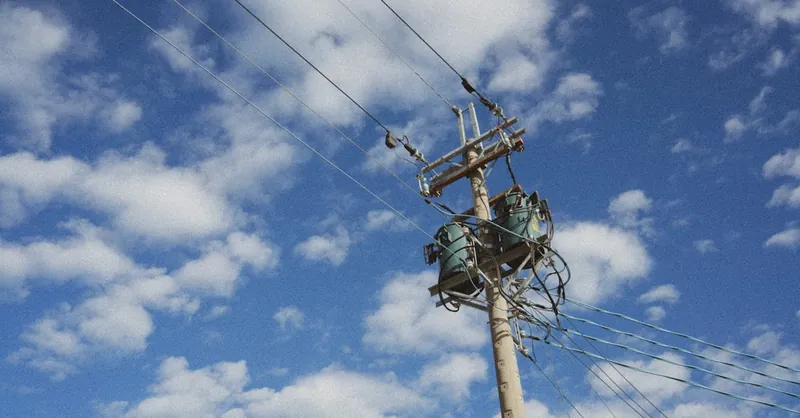
Image courtesy of Matthias Schleiden
Regulatory and Market Mechanisms Supporting Integration
Successfully integrating renewable energy into electrical grids requires more than just technical innovation—it demands robust regulatory frameworks and market mechanisms that incentivize clean energy deployment and ensure economic sustainability. Policymakers and regulators worldwide are increasingly crafting policies and designing energy markets tailored to support renewable-friendly grids, removing barriers while encouraging investment and innovation.
Key Policy Frameworks Promoting Renewable Integration
-
Renewable Portfolio Standards (RPS) and Quotas
Many jurisdictions implement RPS mandates that require utilities to source a specified percentage of their electricity from renewable resources. These standards create clear market demand, accelerating the adoption of wind, solar, and emerging renewables by guaranteeing stable revenue streams. -
Feed-in Tariffs (FiTs) and Power Purchase Agreements (PPAs)
FiTs offer fixed, long-term prices for renewable electricity supplied to the grid, reducing financial uncertainty for project developers. Similarly, PPAs establish contractual arrangements between energy producers and buyers, facilitating bankable investments and stable cash flows critical for scaling renewable projects. -
Grid Access and Interconnection Standards
Regulatory requirements ensuring fair and streamlined grid access for renewable generators are vital to prevent discrimination and delays. Transparent interconnection procedures, clear standards, and timely approvals empower developers to connect to grids efficiently, thus speeding renewable integration.
Market Design Innovations Supporting Renewable Economics
Modern electricity markets are evolving to accommodate the unique characteristics of renewable energy and the flexibility needed for grid stability:
-
Capacity Markets and Ancillary Services
These market segments incentivize flexible resources—such as demand response, energy storage, and fast-ramping generators—that are essential to compensate for renewable variability and maintain reliability. -
Time-of-Use (TOU) and Real-Time Pricing
Dynamic pricing encourages consumers to shift demand towards periods of high renewable output, flattening load curves and reducing peak stress on the grid. -
Renewable Energy Certificates (RECs) and Carbon Pricing
Market-based instruments like RECs provide tradable proof of renewable generation, offering an additional revenue stream. Carbon pricing internalizes environmental costs of fossil generation, making renewables increasingly cost-competitive. -
Virtual Power Plants (VPPs) and Aggregators
Emerging market entities aggregate distributed resources—such as rooftop solar, batteries, and flexible loads—to participate collectively in energy and ancillary service markets, enhancing system flexibility and enabling better integration of variable renewables.
Incentives Driving Investment and Technological Advancement
Governments complement market reforms with direct financial incentives, including:
- Tax Credits and Grants for renewable project development and energy storage deployment.
- Subsidies for Research and Development to spur innovation in emerging technologies like green hydrogen, advanced inverters, and hybrid hybrid energy systems.
- Performance-Based Incentives that reward projects achieving reliability, grid support, and emissions reduction targets.
These regulatory and market mechanisms collectively create an ecosystem where renewable energy integration is not only technically feasible but also economically attractive and scalable. For electrical engineers and energy professionals, understanding these policies and market structures is crucial to navigating project development, optimizing grid operations, and driving the transition to a clean energy future.
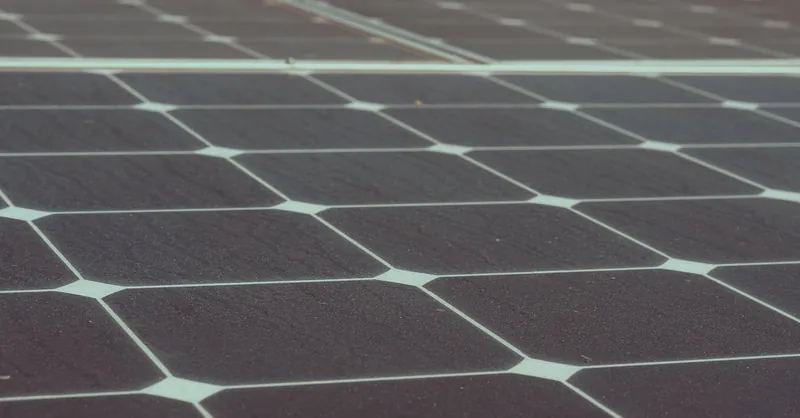
Image courtesy of Kindel Media
Future Trends and Emerging Technologies in Renewable Grid Integration
As the renewable energy landscape rapidly evolves, several cutting-edge technologies and innovative concepts are poised to revolutionize how clean energy integrates with electrical grids. These advances not only address existing challenges but also open new pathways for smarter, more resilient, and economically efficient power systems.
Vehicle-to-Grid (V2G) Integration
With the exponential growth of electric vehicles (EVs), vehicle-to-grid (V2G) technology is gaining momentum as a dynamic solution for grid flexibility. V2G enables EVs to act as mobile energy storage units, feeding electricity back to the grid during peak demand or renewable shortfalls and recharging when surplus renewable power is available. This bidirectional interaction helps:
- Balance grid supply and demand by leveraging distributed storage capacity.
- Provide ancillary services such as frequency regulation and voltage support.
- Enhance renewable energy utilization by absorbing excess solar or wind generation that might otherwise be curtailed.
Widespread deployment of V2G requires advanced communication protocols, smart charging infrastructure, and market frameworks that incentivize participation, all of which are actively being developed and piloted worldwide.
Blockchain for Energy Management and Peer-to-Peer Trading
Blockchain technology is emerging as a powerful tool to transform energy transactions and decentralized management within renewable-rich grids. By enabling secure, transparent, and tamper-proof recording of energy generation, consumption, and trade, blockchain facilitates:
- Peer-to-peer (P2P) energy trading among prosumers (consumers who generate excess renewable power), allowing citizens to buy and sell electricity directly, increasing local renewable utilization.
- Automated settlement and billing through smart contracts that reduce administrative costs and enable real-time energy market participation.
- Enhanced grid transparency and traceability, boosting trust and compliance in distributed energy resource (DER) integration.
Several pilot projects and platforms are leveraging blockchain to create decentralized energy marketplaces, promising more democratized, efficient, and flexible grid operations.
Next-Generation Renewable Technologies
In addition to advancing established wind and solar technologies, novel renewable solutions are emerging that could further transform grid integration:
- Floating offshore wind turbines expand wind resource access by situating turbines in deeper waters with stronger, steadier winds, boosting generation potential.
- Perovskite and tandem solar cells promise higher photovoltaic efficiencies and lower manufacturing costs, enabling more compact and cost-effective solar deployments.
- Green hydrogen production via electrolysis powered by surplus renewables offers a versatile energy carrier that can store energy long term, decarbonize hard-to-electrify sectors, and provide grid balancing through power-to-gas systems.
- Marine energy technologies like tidal and wave power harness predictable ocean dynamics, adding new dimensions to renewable portfolios.
Together, these emerging technologies indicate a future where grids are not only renewable-centric but also characterized by diversification, decentralization, and digital intelligence. Electrical engineers and energy innovators must stay abreast of these advances to design next-generation grids capable of supporting an accelerated clean energy transition.

Image courtesy of Mark Stebnicki
